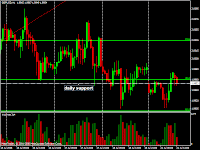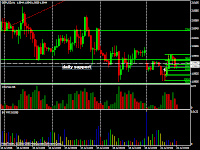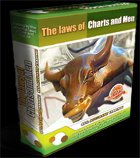SETUPS AND TRIGGERS
You can learn all of the individual techniques you want but it still won't give you the market understanding that you really need. You can learn all the letters of the alphabet and still not know how to read.
You can learn to read words but still not understand what the words mean. You can learn all the notes to music but still not be able to read the sheet music of a musical score. You get my drift.
I teach not only the techniques but how to intergrate the techniques to fit your individual trading style.
There are only 2 types of moves
1. Pivots
2. Breakouts
These are the two reactions that propel a market from one s/r level to the next. This is where the ignition is turned on and the thrust initiated at these points carry price to the next s/r level via shear momentum. If we were in a rocket it would be called a short burst or “Burn”.
Where a burn is initiated at s/r, the direction and power will be in proportion to the amount of fuel/volume released to fuel the burn. Whatever system or method you are now using, it will be greatly enhanced by knowing the location of potential turning points and more importantly, what it means.
You have to understand that a setup is only meant to propel the market to the next s/r level. So, if price is moving down and you enter short near the next support level, the trade will most likely bounce up off support above your short entry price because you can easily expect a 20 pip bounce up off a s/r level even if price does recover and continue back down. If you are a day trader and that 20 pip bounce can easily turn to 40 or 50 if your broker smells the opportunity to stop you out.
This is the major problem of most traders. It is not direction that is the problem, it is timing. Timing is everything.
If you are right about direction but wrong about timing the market can go 150 pips against you before confirming that you were right about direction.
Timing is as much about where to enter/exit as to when to do so because, the WHERE tells you the WHEN.
At the where (s/r) you are looking for a particular chart formation to tell you that a directional move is imminent and this chart formation is called your SETUP.
The setup tells you that the market is set up or (balanced) to make a move either up or down. If the setup does not occur at a known s/r level the setup is still valid but has a much higher probability of failure than if this were not the case.
Now, before you enter a trade you want to have a TRIGGER. The SETUP cocks the gun…a confirmation of the SETUP is the TRIGGER. The trigger tells you it’s time to hit the enter button on your broker platform.
Your trigger is based upon an event you define, after the setup, to signal you to enter the trade. For example. My trigger to enter after the pivot or breakout setup in LCM is to enter on a pullback to the pivot point or breakout point.
Your setup determines direction but your trigger determines you risk by determining the exact location of entry and therefore the distance of your stop. Your stops and exits should also be determined by support and/or resistance.
Your trigger also determines your profit because the farther away from the next s/r level you can enter the more profit you have an opportunity to capture. If I go long I would rather enter 50 pips away from overhead resistance than 20.
In fact, if you don’t know the location of s/r you will end up going long 5 pips away from overhead resistance and then wonder why the trade went immediately against us.
Or we enter long and place our stop above support and wonder why we got stopped out and then price continued in our direction.
But if we get caught up in only TRIGGERS AND SETUPS yet, we don’t fully understand the importance of where the SETUP/TRIGGER occurs in the context of support/resistance you will never reach your trading potential.
Support and resistance reacts like the skin on a trampoline. When you hit it you will bounce. How high the bounce carries you is determined at WHERE? At the skin of the trampoline or support. It is the energy created upon the contact collision between you and support (skin of trampoline) at that precise point in time, that determines how high you will spring off the trampoline, or if the skin of the trampoline is strong enough to support the force of your fall without ripping and allowing you to continue falling down to the ground which is next support level. After that point you are carried upward by the momentum created by this initial explosion of energy or burst of upward force.
But what if there are other trampolines between the ground and the first trampoline? The odds are high that the next trampoline below the torn trampoline you fell through will most likely serve as next support against your fall stop your decent and spring you back up to the height near to test or back up through the trampoline you just broke through.
The trampoline you fell through is now above your head and will now serve as resistance to your rise on your bounce back up. Before you can continue upward you must first break through the membrane of the trampoline overhead. If you bounce back above and break back up through that first trampoline that could not support your fall, that first trampoline now once again becomes support for you when you fall back down to it so you can use that momentum to spring to the next trampoline above your head.
Now, when you are falling down to the trampoline don’t you brace or change the posture of your body to “SETUP” for the bounce off the trampoline. So, a setup is nothing more than market geometry and geometry is simply patterns, then the market geometry that is expressed on the chart can alert you to situations by the time and location of its geometry.
But what if you setup to brace yourself for the bounce? But what if someone snatched the trampoline from beneath you what would happen? Even though you were setup to bounce you did not bounce because there is no support for you to bounce off of.
Have you ever seen anything that bounced off of nothing? We know that for anything to bounce it must hit something right? So, if you see a setup and you do not see a s/r level, then you should be just as suspicious as if you so someone bounce off of an invisible trampoline.
You need to know the 6 types of support/resistance levels. A ceiling overhead or a floor below can be made of several different materials. It can be made of wood, ceiling tiles, brick, metal, etc… They are different but they all serve the same function. A ceiling can be made from a combinition of some of the construction materials together. This is called composite material. Support and resistance is a composite.
AS SUPPORT OR RESISTANCE…
A market is the same way. Support and resistance can be constructed of price, Fibonacci, moving averages, trendline, or volume s/r. IN TRUTH, s/r is composed of a composite material or combination of the different types of s/r. If you don’t know the six types of construction materials that s/r is made of then how can you know the blueprint or structure upon which the current s/r levels exist. S/R must hang upon a framework and knowing the framework/blueprints you will be able to find your way around the structure even in the dark.
Cheers, Jerry
jerry@forextradingmajic.com
tradingmajic1@gmail.com







